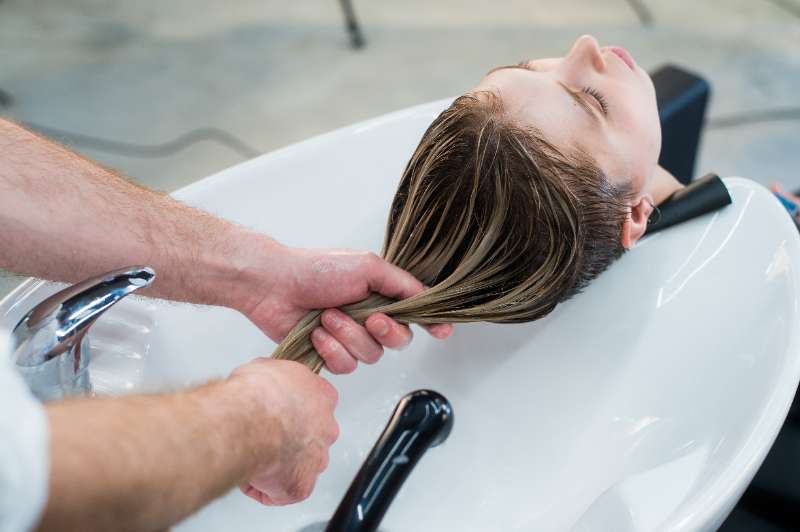If you’ve ever wondered why your hair feels weaker after colouring or why constant heat styling leaves strands looking tired, the answer lies in the structure of the hair itself. Every strand is held together by tiny bonds that give it shape, strength, and flexibility. When those bonds break, the effects are visible as frizz, split ends, and a general lack of shine. For years, most hair products only worked on the surface, coating the outside for a temporary boost. Today, advances in cosmetic science are changing the way damaged hair is treated, with a focus on repairing bonds from the inside out.
What Causes Hair Bonds to Break
Hair may look simple on the outside, but under a microscope, it’s surprisingly complex. The strength of each strand comes from three main types of bonds: disulphide, hydrogen, and ionic. Disulphide bonds are the strongest, giving hair its resilience and shape, while hydrogen and ionic bonds contribute flexibility and elasticity. When these connections are intact, hair looks smooth and behaves predictably.
The problem is that everyday habits gradually wear them down. Chemical colouring, bleaching, and perming directly alter disulphide bonds. Flat irons, blow dryers, and curling tools weaken hydrogen bonds through heat and moisture loss. Even brushing too aggressively or exposure to the sun can put stress on the structure. Once enough bonds are broken, the hair shaft loses its integrity, resulting in breakage, dullness, and difficulty maintaining style.
The Rise of Bond Repair in Modern Haircare
Traditional haircare has long focused on coating the surface with oils, silicones, or conditioning agents. These methods do improve softness and manageability, but they don’t actually mend the structural damage at the core of the strand. Over the last decade, cosmetic scientists have shifted attention toward treatments that work below the cuticle, targeting the bonds themselves.
This shift was sparked by salon treatments originally designed to protect hair during the bleaching process. Colourists found that clients who used bond-focused products had less breakage and more consistent results, even with repeated chemical services. From there, the concept expanded into a broader range of products, including shampoos, conditioners, and leave-in treatments that claim to rebuild broken bonds. The appeal lies in the fact that they aim to restore strength rather than simply mask damage, which is why they’ve become one of the biggest innovations in professional haircare.
How These Treatments Actually Work
Bond repair isn’t about adding a temporary coating to make hair feel smoother. The goal is to reconnect or reinforce the internal links that give each strand its structure and integrity. The most common approach involves small molecules that can penetrate the cuticle and interact with broken bonds inside the cortex. By creating new links or strengthening partially damaged ones, the hair gradually regains flexibility and resistance to breakage.
Another vital part of the process is protection. Treatments often include ingredients that shield the cuticle from further stress during styling or colouring. This dual action—repairing the inside and defending the outside—helps explain why results are noticeable after just a few uses. A softer texture, reduced snapping, and improved shine are often the first signs that the structure is being rebuilt.
The Role of Professional and At-Home Options
For anyone dealing with significant chemical or heat damage, many salons now recommend a bond repair treatment for hair as part of a colour service or recovery plan. Professional formulas are usually more concentrated, allowing stylists to rebuild strength in a single session. These in-salon options can be tailored to the client’s hair type and the level of damage, often producing results that are hard to replicate with over-the-counter products.
That said, at-home treatments play an essential role in maintaining progress between salon visits. Shampoos, conditioners, and masks infused with bond-targeting ingredients can extend the life of professional services and keep hair in better condition day to day. While they may be less intense than salon-grade versions, consistent use helps prevent regression, keeping the bonds reinforced over time.
Comparing Professional and At-Home Options
When choosing between salon and at-home solutions, consider both concentration and longevity. Salon treatments are designed to produce immediate, visible results. A stylist applies them during colouring or as a standalone service, allowing the formula to penetrate deeply and set in place under controlled conditions. The results often last weeks, depending on how frequently hair is washed and styled.
At-home products, by contrast, focus on maintenance and upkeep. They provide a steady supply of reinforcing ingredients that keep the structure from breaking down again. The results are gradual and rely on consistency, but they provide people with the opportunity to protect their investment in salon treatments while managing everyday damage. In practice, the best outcomes typically result from a combination of both approaches: professional repair for dramatic results, supplemented by at-home care to maintain those benefits.
Long-Term Results and Realistic Expectations
Although bond-focused formulas represent one of the most promising advances in hair care, it’s essential to remember that they are not a one-time solution. Hair is constantly exposed to stress from environmental factors, heat, and chemical processing. Treatments can rebuild strength and restore shine, but the process must be ongoing for the results to last.
With regular use, many people notice improved elasticity, easier detangling, and a smoother finish that reflects light more evenly. However, because hair is non-living once it grows past the follicle, no product can permanently reverse every type of damage. Consistent treatments, paired with healthy habits like reducing heat exposure and using protective products, create the best conditions for lasting improvements.
Conclusion
The science behind bond repair has transformed the way people perceive damaged hair. Instead of relying solely on conditioners and surface-level treatments, modern solutions are designed to rebuild strength from the inside. By understanding what causes bonds to break and how targeted treatments restore them, it becomes easier to choose products and services that deliver real results. For anyone seeking healthier, stronger hair, this approach marks a genuine shift toward long-term care rather than short-lived fixes.



































